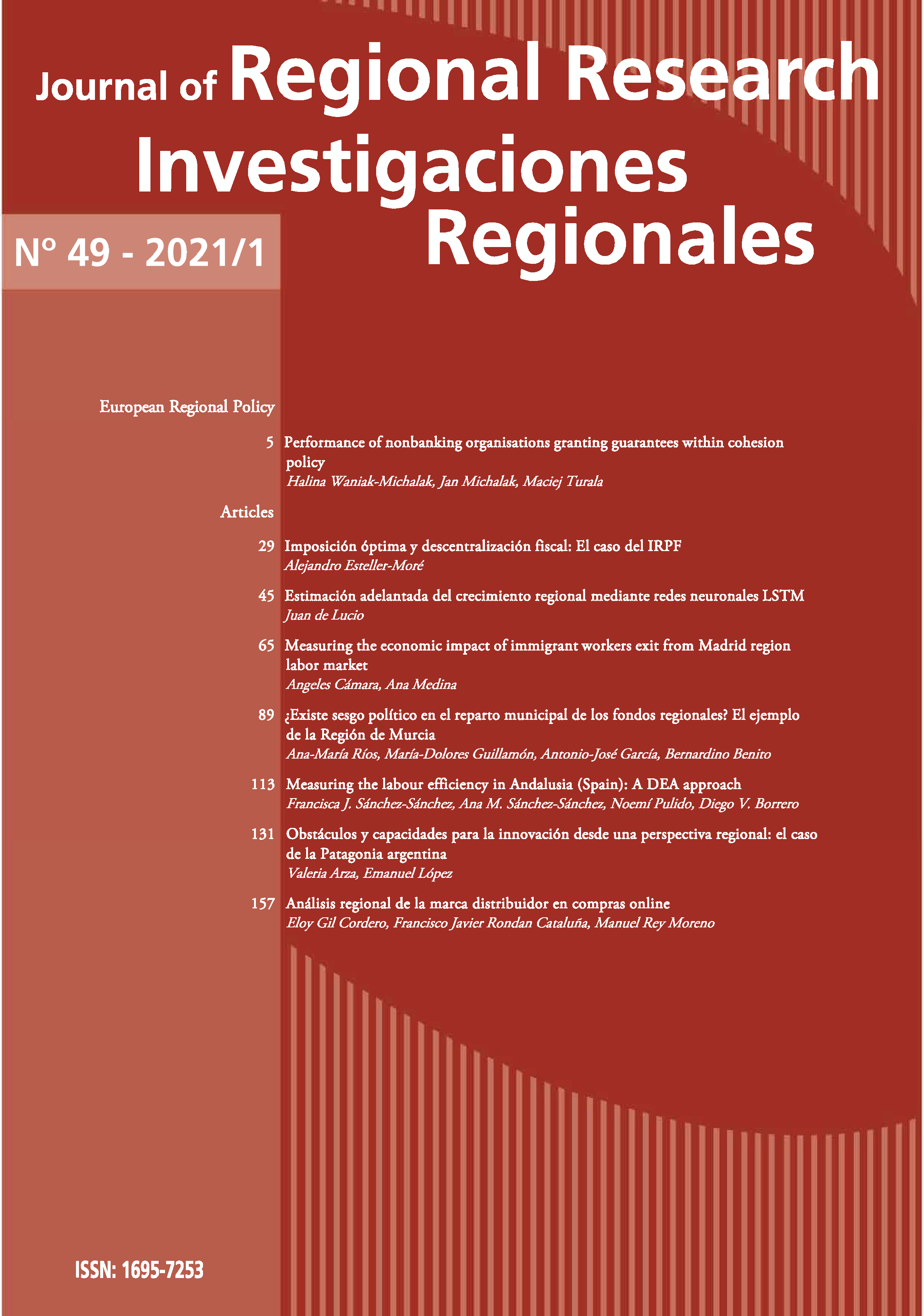Estimación adelantada del crecimiento regional mediante redes neuronales LSTM
DOI:
https://doi.org/10.38191/iirr-jorr.21.007Palabras clave:
predicción regional; redes neuronales; inteligencia artificial; LSTMResumen
El trabajo incorpora las técnicas de Inteligencia Artificial a las herramientas disponibles para el análisis de coyuntura regional. Se compara las estimaciones realizadas con Redes Neuronales (en concreto, mediante la utilización de redes con larga memoria de corto plazo, LSTM por sus siglas en inglés) con los instrumentos más habituales en el análisis de coyunturas (series temporales, indicadores sintéticos y factores dinámicos). Los resultados muestran que los avances en redes neuronales pueden ser incorporados al análisis de coyuntura: son herramientas complementarias, con mayor flexibilidad para captar la diversidad de situaciones en la economía real y con una capacidad de estimación superior (menor error cuadrático medio). El documento propone la utilización de este tipo de técnicas para solucionar una diversidad de problemas en economía regional.
Descargas
Publicado
Versiones
- 2024-07-17 (2)
- 2021-05-03 (1)
Número
Sección
Licencia
Aquellos autores/as que tengan publicaciones con esta revista, aceptan los términos siguientes:
En el momento de aceptar la publicación de sus artículos en Investigaciones Regionales / Journal of Regional Research, los autores acceden a utilizar la licencia Creative Commons CC BY-NC. IIRR/JRR es una revista abierta que permite a los autores retener el máximo control sobre su trabajo. Los autores aceptarán utilizar la licencia Creative Commons Attribution-NonCommercial. Esta licencia permite a cualquier persona copiar y distribuir el artículo con propósitos no comerciales, siempre y cuando se atribuya adecuadamente la atribución del trabajo a la revista y a los autores.

